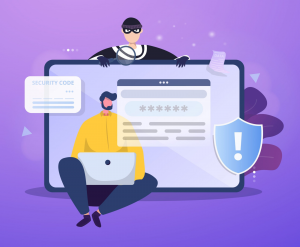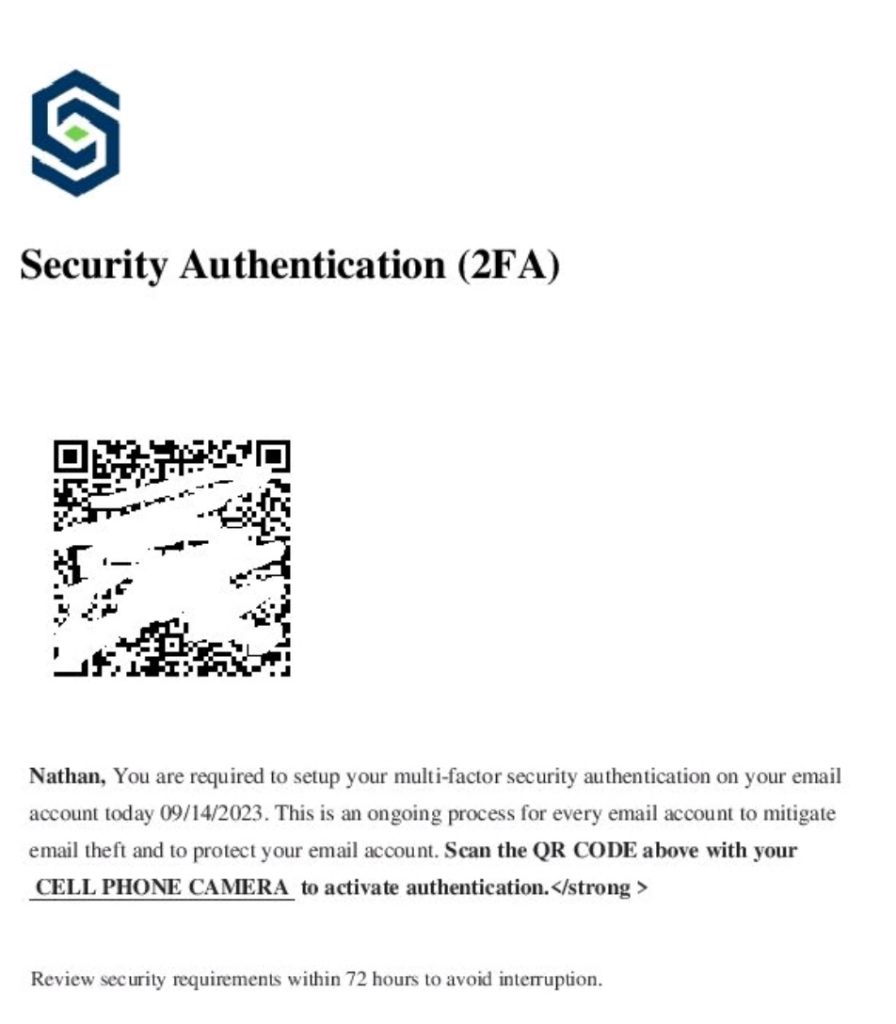 One of the new strategies malicious hackers are using is sending a fake email to set up Multi Factor Authentication on your phone.
One of the new strategies malicious hackers are using is sending a fake email to set up Multi Factor Authentication on your phone.
The Dangers of MFA Phishing Attempts
MFA is designed to add an extra layer of security by requiring multiple authentication factors such as something they know (password), something they have (phone or token), or something they are (biometric data). Attackers are now finding creative ways to trick users into handing over their personal sensitive information, so it is important to know how to protect you and your business from MFA phishing attempts.
Here is an example of an MFA Phishing attempt:

How MFA Phishing Works
Phishing Messages: Typically, phishing attacks begin with an email or text message. They generate a feeling of urgency or fear to get people to act quickly and seem real, frequently imitating actual organizations or services.
Bogus Login Pages: When a user clicks on a link within the phishing message, they are taken to a fraudulent login page. This page closely resembles the legitimate login portal of the targeted service. Users are prompted to enter their credentials, including usernames and passwords.
Stolen Credentials: As users unknowingly provide their login information, cybercriminals capture it in real-time. They now possess the users username and password.
MFA Bypass: Simultaneously, attackers may attempt to access the victim's account. When the MFA prompt is triggered (e.g., a code sent to the user's phone), the attacker can quickly enter the code, effectively bypassing the MFA protection.
Account Compromise: Armed with both the stolen credentials and the MFA code, the attacker gains unauthorized access to the victim's account, potentially compromising sensitive information.
Tips for Avoiding MFA Phishing Attacks
Verify the Source: Always ignore messages and emails asking you to take immediate action. Verify the sender's identity and legitimacy of the message before clicking any links or downloading attachments.
Check the URL: Before entering your login information, examine the URL. Ensure it matches the genuine website's address and look for the padlock symbol indicating a secure connection.
Enable MFA: Enable Multi-Factor Authentication on all your accounts that offer it. Even though fake MFA is a threat, genuine MFA remains a valuable layer of defense against hackers.
Use Password Managers: Employ a reputable password manager to generate and store complex, unique passwords for each account. This reduces the risk of attackers obtaining your login credentials.
Educate Yourself: Stay informed about the latest phishing and fake MFA tactics. Regularly update your knowledge to recognize and respond to these threats effectively.
Report Suspicious Activity: If you encounter a suspicious message or notice unusual account activity, report it immediately to the relevant authorities or your organization's IT department.
Stay Safe!


